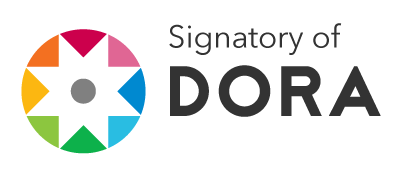Metodologías de estudio de las redes sociales online y jóvenes
DOI:
https://doi.org/10.37467/gka-revsocial.v2.1236Palabras clave:
redes sociales online, jóvenes, metodologías, comunicación, internetResumen
A pesar de que se cuenta con un gran número de investigaciones sobre redes sociales online y jóvenes, la mayoría de ellas carece de una metodología rigurosa o no cuenta con una muestra representativa. Hay, al menos, tres dificultades. La primera es que las redes sociales son reacias a proporcionar cualquier tipo de dato para facilitar el establecimiento de un universo de estudio. La segunda es que se trata de un universo en constante cambio y la tercera deriva de que el acceso a los datos de los usuarios es muchas veces imposible debido a las normas de privacidad que han ido estableciendo las redes sociales conforme han ido evolucionando. Por todo ello se ha optado por metodologías tradicionales como la encuesta o los grupos de discusión. Sin embargo, el uso a la par de metodologías cualitativas y cuantitativas es poco frecuente, y en este sentido se propone una nueva metodología mixta que aproxime más este tipo de investigaciones a la realidad de la relación establecida entre jóvenes y redes sociales.
Descargas
Estadísticas globales ℹ️
|
958
Visualizaciones
|
1422
Descargas
|
|
2380
Total
|
|
Citas
Acquisti, A. y Gross, R. (2006). Imagined Communities: Awareness, Information Sharing, and Privacy on the Facebook. Pittsburgh: PET. DOI: https://doi.org/10.1007/11957454_3
Aguilar, D. y Said Hung, E. (2010). “Identidad y subjetividad en las redes sociales virtuales: caso de Facebook”. Zona Próxima, enero-junio, 190-207.
Berman, J. y Bruckman, A. (2001). “The Turing Game: Exploring Identity in an Online Environment”. Convergence, 7(3), 83-102. DOI: https://doi.org/10.1177/135485650100700307
Bernete, F. (2010). “Usos de las TIC, Relaciones sociales y cambios en la socialización de las y los jóvenes”. Revista de Estudios de Juventud 88, 97-114.
Boyd, D. (2004). “Friendster and Publicly Articulated Social Networks”. Conference on Human Factors and Computing Systems (CHI 2004 ). abril 24-29. Vienna: ACM. DOI: https://doi.org/10.1145/985921.986043
Boyd, D. (2006). “Friends, friendsters, and top 8: Writing community into being on social network sites”. First Monday, 11(12). DOI: https://doi.org/10.5210/fm.v11i12.1418
Boyd, D. (2007). “Why Youth (Heart) Social Network Sites: The Role of Networked Publics in Teenage Social Life”. MacArthur Foundation Series on Digital Learning – Youth, Identity, and Digital Media Volume (ed. David Buckingham). Cambridge, MA: MIT Press.
Boyd, D. (2008). “Facebook's Privacy Trainwreck: Exposure, Invasion, and Social Convergence”. Convergence 14(1). DOI: https://doi.org/10.1177/1354856507084416
Boyd, D., Chang, M. y Goodman, E. (2004). “Representations of Digital Identity”. Conference on Computer Supported Cooperative Work (CSCW 2004). Chicago, IL, 6-10 noviembre.
Boyd, D. y Ellison, N. (2008). “Social network sites: Definition, history, and scholarship”. Journal of Computer-Mediated Communication , 13, 210-230 DOI: https://doi.org/10.1111/j.1083-6101.2007.00393.x
Boyd, D. y Heer, J. (2006). “Profiles as Conversation: Networked Identity Performance on Friendster”. Proceedings of the Hawaii International Conference on System Sciences, Kauai, Hawaii , HICSS-39. DOI: https://doi.org/10.1109/HICSS.2006.394
Bringué, X. y Sábada, C. (2011). Menores y redes sociales . Madrid: Foro Generaciones Interactivas.
Bruckman, A., Gov, S. y Yardi, S. (2006). “Managing Identities Across Multiple Online Communities”. UNC Social Software Symposium , Chapel Hill, NC. 8-9 diciembre.
Caldevilla, D. (2010). “Las Redes Sociales. Tipología, uso y consumo de las redes 2.0 en la sociedad digital actual”, Documentación de las Ciencias de la Información 2010, vol. 33, 45-68.
Cáceres, M. D., Ruiz San Román, J. A. y Brändler, G. (2009). “Comunicación interpersonal y vida cotidiana. La presentación de la identidad de los jóvenes en Internet”. Cuadernos de Información y Comunicación , 14, 213-231.
Castañares, W. (2010). “El uso de la fotografía en la autorrepresentación de los sujetos en las redes sociales”. En TORREGROSA, M. (coord.), Imaginar la realidad. Ensayos sobre la representación de la realidad en el cine, la televisión y los nuevos medios, Sevilla/Zamora, Comunicación social.
Castells, M. (2009), Comunicación y poder . Madrid, Alianza.
Cheunga, C., Pui-Yee, C. y Lee, M. (2010). "Online social networks: Why do students use Facebook?".
Computers in Human Behavior (2010) n. pag. Science Direct. Web. Febrero 2011.
Dwyer, C., Hiltz, S. y Passerini, K. (2007). “Trust and Privacy Concern Within Social Networking Sites: A Comparison of Facebook and MySpace”. AMCIS 2007 Proceedings . Paper 339.
Ellison, N., Lampe, C. y Steinfield, C. (2007). “The benefits of Facebook ‘friends: Social capital and college students’ use of online social network sites”. Journal of Computer-Mediated Communication, 12(4). DOI: https://doi.org/10.1111/j.1083-6101.2007.00367.x
Espinar-Ruiz, E. y González-Río, M. J. (2009). “Jóvenes en las redes sociales virtuales: un análisis exploratorio de las diferencias de género”. Feminismo/s: Revista del Centro de Estudios sobre la Mujer de la Universidad de Alicante 14, 87-106. DOI: https://doi.org/10.14198/fem.2009.14.06
Fovet, F. (2009). “Impact of the use of Facebook amongst students of high school age with Social, Emotional and Behavioural Difficulties (SEBD)”. 39th ASEE/IEEE Frontiers in Education Conference. Session W2G. San Antonio, TX, 18-21 octubre. DOI: https://doi.org/10.1109/FIE.2009.5350786
Fox, S. y Jones, S. (2009). “Generations Online in 2009”. Pew Internet & American Life Project.
Fraser, N. (1992). “Rethinking the Public Sphere: A Contribution to the Critique of Actually Existing Democracy”. En Calhoun , C. (ed.), Habermas and the Public Sphere , Massachusetts, MIT Press.
García, F. y Rosado M. J. (2012). “Conductas sociocomunicativas de los nativos digitales y los jóvenes en la web 2.0”. Comunicación y sociedad 25(1), 15-38.
Joinson, A. (2008). “Looking at, looking up or keeping up with people?: motives and use of Facebook”. En CHI ’08: Proceeding of the twenty-sixth annual SIGCHI conference on Human factors in computing systems , New York, NY, USA, ACM, pp. 1027-1036. DOI: https://doi.org/10.1145/1357054.1357213
Lampe, C., Ellison, N. y Steinfield, C. (2006). “A Face(book) in the Crowd: Social Searching vs. Social Browsing”. Proceedings of ACM Special Interest Group on Computer-Supported Cooperative Work, ACM Press , 167-170. DOI: https://doi.org/10.1145/1180875.1180901
Lampe, C., Ellison, N. y Steinfield, C. ( 2007), “A Familiar Face(book): Profile Elements as Signals in an Online Social Network”. Proc. CHI 2007, ACM Press , 435-444. DOI: https://doi.org/10.1145/1240624.1240695
Lenhart, A. y Madden, M. (2007). “Social Networking Websites and Teens”. Pew Internet & American Life Project.
Mcluhan, M. y Fiore, Q. (2001). El medio es el mensaje: un inventario de efectos . Barcelona, Paidós Ibérica.
Mazer, J., Murphy, R. y Simonds, C. (2007). “I’ll see you on ‘Facebook’: The effects of computer- mediated teacher self-disclosure on student motivation, affective learning, and classroom climate”. Communication Education, 56, 1-17. DOI: https://doi.org/10.1080/03634520601009710
O’Reilly, T. (2005). Web 2.0: Compact Definition? O'Reilly Radar.
Pempek, T., Yermolayeva, Y., y Calvert, S. (2009). “College students' social networking experiences on Facebook”. Journal of Applied Developmental Psychology . DOI: https://doi.org/10.1016/j.appdev.2008.12.010
Pierce, T. (2009). “Social anxiety and technology: Face-to-face communication versus technological communication among teens”. Computers in Human Behavior, 25, 1367-1372. DOI: https://doi.org/10.1016/j.chb.2009.06.003
Rainie, L. (2003). “Teenage Life Online: The Rise of the Networked Generation” en la Conferencia Singapore Youth.Net.
Ross, C., Orr, E., Sisic, M., Arsenault, J., Simmering, M. y Orr, R. (2009). “Personality and motivations associated with Facebook use”. Computers in Human Behavior 25, 578–586. DOI: https://doi.org/10.1016/j.chb.2008.12.024
Stutzman, F. (2006), “An evaluation of identity-sharing behavior in social network communities”. Proceedings of the 2006 iDMAa and IMS Code Conference, Oxford, Ohio.
Walther, J. B., Van Del Heide, B., Kim, S.-Y., Westerman, D., y Tong, S. T. (2008). “The Role of Friends’ Appearance and Behavior on Evaluations of Individuals on Facebook: Are We Known by the Company We Keep?”. Human Communication Research, 34(1), 28-49. DOI: https://doi.org/10.1111/j.1468-2958.2007.00312.x
Descargas
Publicado
Cómo citar
Número
Sección
Licencia
Los autores/as que publiquen en esta revista aceptan las siguientes condiciones:
- Los autores/as conservan los derechos de autor.
- Los autores/as ceden a la revista el derecho de la primera publicación. La revista también posee los derechos de edición.
- Todos los contenidos publicados se regulan mediante una Licencia Atribución/Reconocimiento-SinDerivados 4.0 Internacional. Acceda a la versión informativa y texto legal de la licencia. En virtud de ello, se permite a terceros utilizar lo publicado siempre que mencionen la autoría del trabajo y a la primera publicación en esta revista. Si transforma el material, no podrá distribuir el trabajo modificado.
- Los autores/as pueden realizar otros acuerdos contractuales independientes y adicionales para la distribución no exclusiva de la versión del artículo publicado en esta revista (p. ej., incluirlo en un repositorio institucional o publicarlo en un libro) siempre que indiquen claramente que el trabajo se publicó por primera vez en esta revista.
- Se permite y recomienda a los autores/as a publicar su trabajo en Internet (por ejemplo en páginas institucionales o personales), una vez publicado en la revista y citando a la misma ya que puede conducir a intercambios productivos y a una mayor y más rápida difusión del trabajo publicado (vea The Effect of Open Access).













